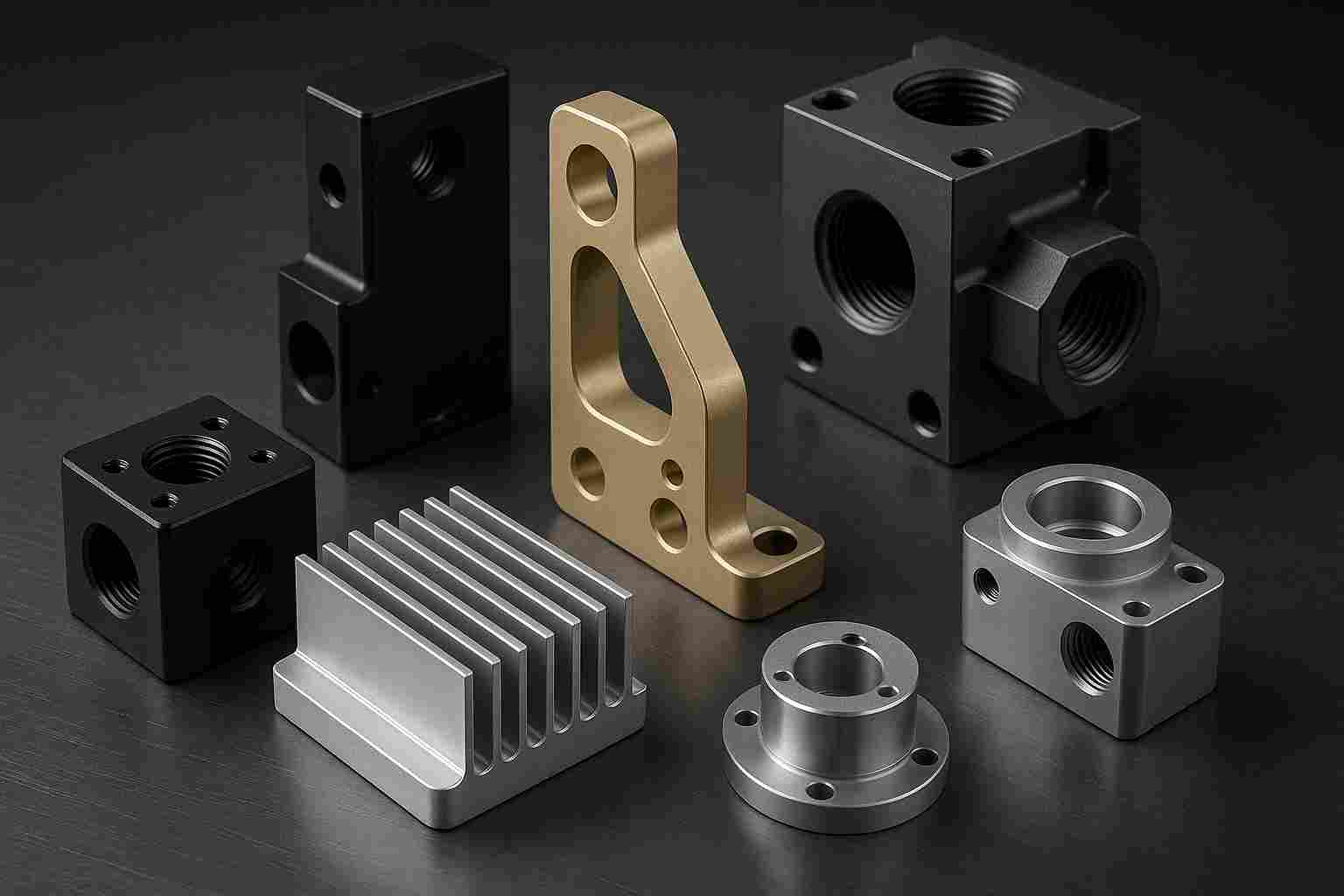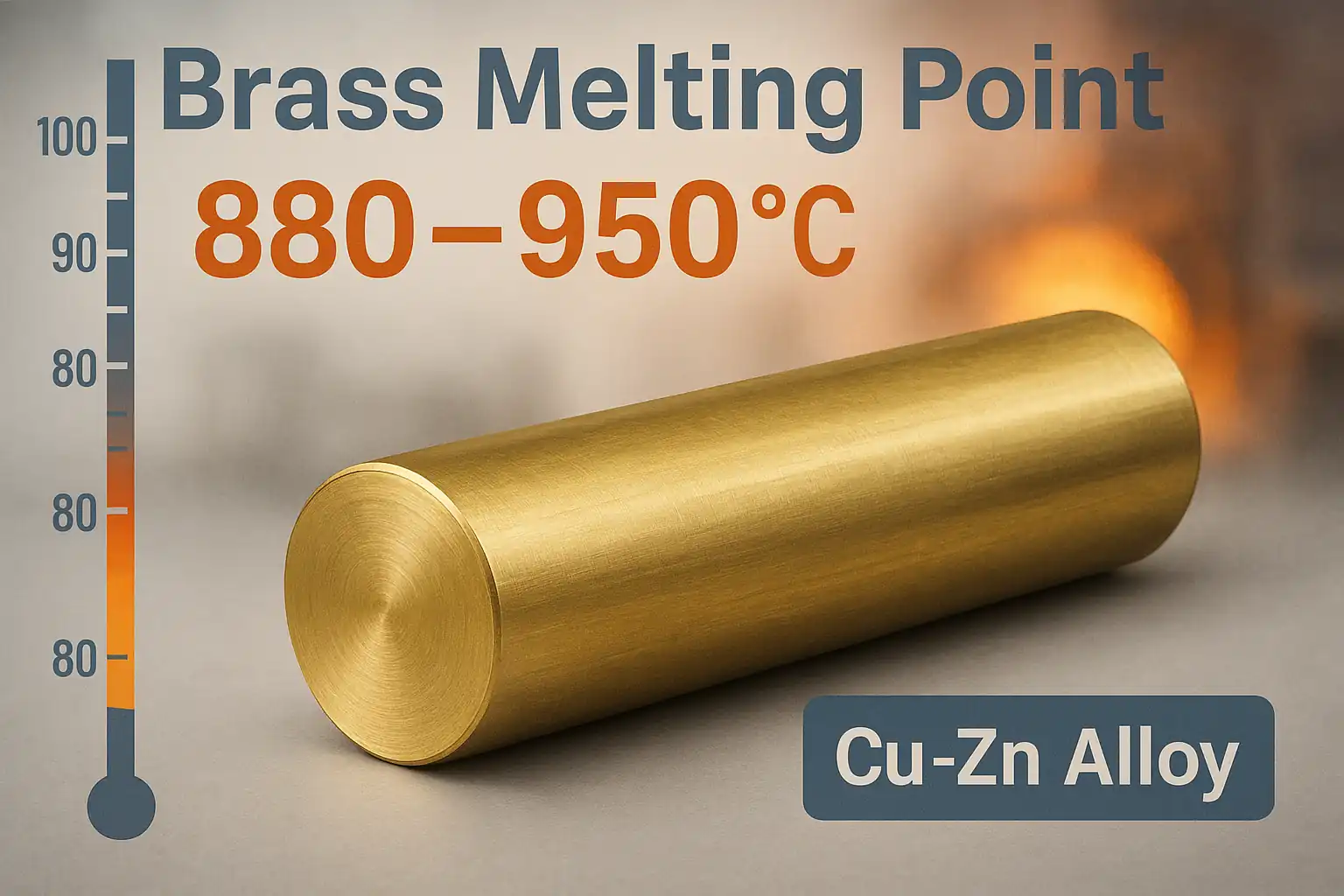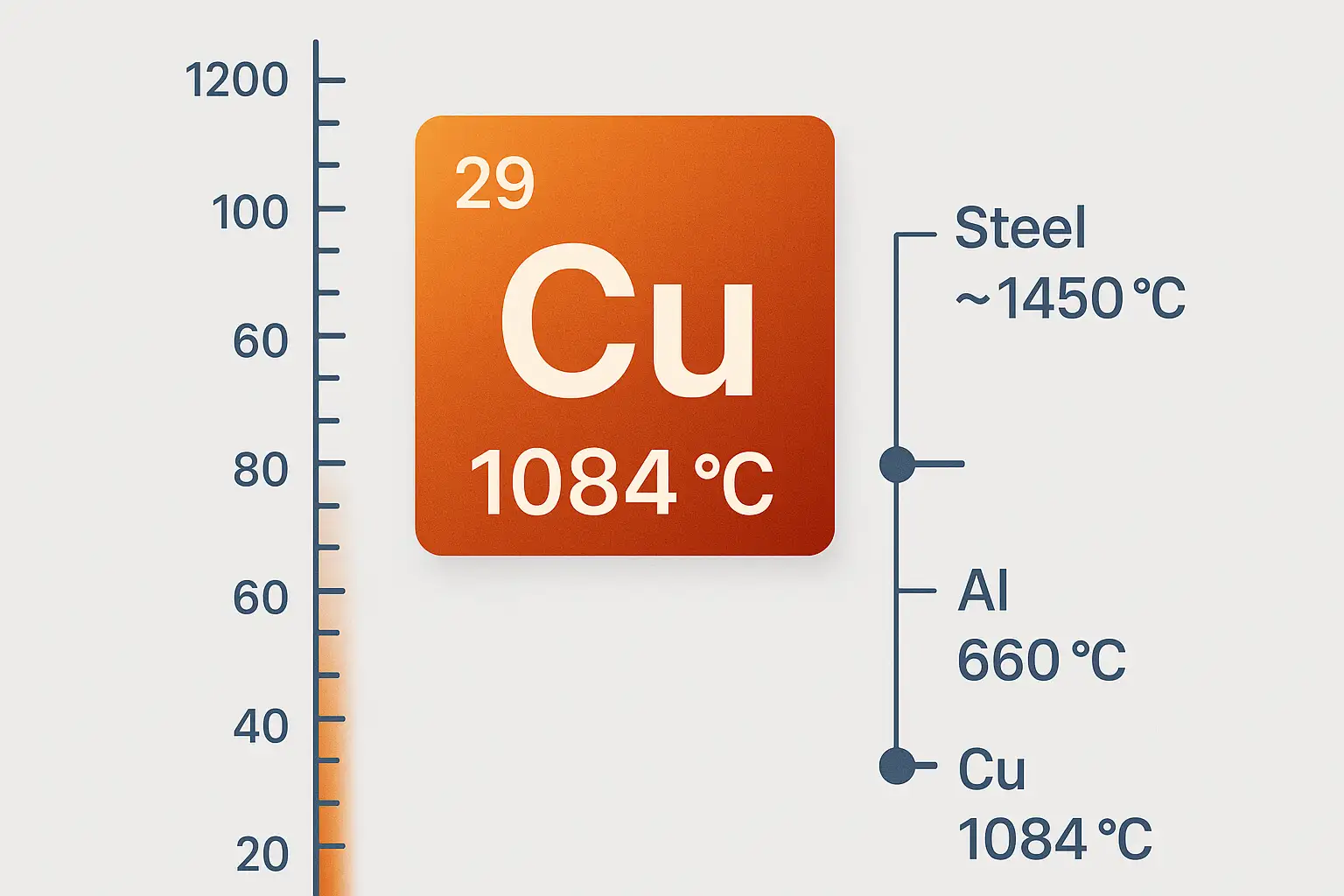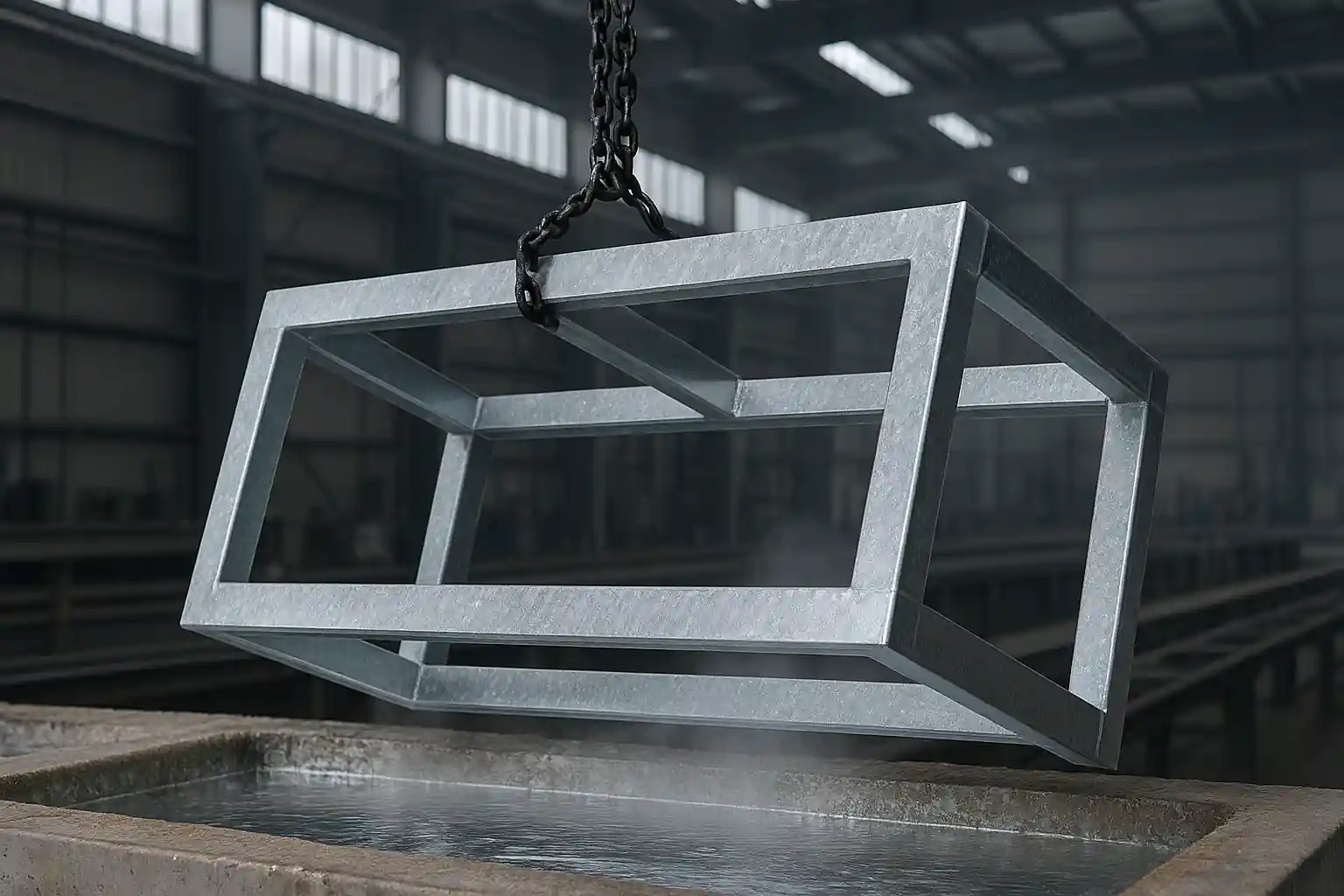In modern manufacturing, aluminium is widely used for its lightweight, high strength, and excellent thermal properties in industries such as automotive, aerospace, and electronics. However, raw aluminium is susceptible to corrosion and surface wear. Anodising is a crucial surface treatment that solves these issues. This guide breaks down the core principles, the complete process, main types, and the full value of anodising in industrial applications.
A Brief History of Anodizing
The anodizing process first appeared in the early 20th century, initially developed to prevent corrosion on naval aircraft. Chromic Acid Anodizing (Type I) emerged as the earliest type. This was quickly followed by the introduction of Sulfuric Acid Anodizing (Type II) and Hard Anodizing (Type III), which marked the technology’s maturation and made it an indispensable surface treatment technique in modern industry.
What is Anodizing?
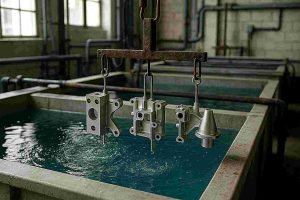
Anodizing is not a simple coating, but a controlled electrochemical conversion process. During this process, the aluminum part serves as the anode in an acidic electrolyte. By applying direct current, the aluminum metal surface is converted into a dense aluminum oxide (Al2O3) layer that grows directly from the substrate.
Core Value and Function
-
Functional Conversion: Anodizing converts the soft, corrosive surface of aluminum into a highly hard, corrosion-resistant ceramic oxide.
-
Adhesion: Since the oxide layer converts from the aluminum substrate itself, it ensures extremely strong molecular bonding and superior adhesion, eliminating the risk of coating peeling common with traditional finishes.
-
Application Purpose: It is the key surface treatment for enhancing aluminum’s wear resistance, corrosion protection, and insulation, making it essential for high-standard industries like aerospace, automotive, and high-quality electronics.
How Anodizing Works
This section details the fundamental electrochemical principles that drive the aluminum conversion and the precise three-stage operational flow required to achieve the durable oxide film.
Anodic Film Conversion Mechanism
The core of the process relies on a precise electrochemical reaction. When the aluminum part is immersed as the anode in a temperature-controlled acidic electrolyte, applying direct current (DC Power) initiates a controlled oxidation. This process forces a chemical reaction that converts the native aluminum metal into a highly ordered, dense aluminum oxide (Al2O3) structure. This reaction mechanism ensures the final oxide layer is molecularly bonded to the substrate and will not peel.
Three-Stage Process Flow
To ensure final film quality, the operational process is divided into three core stages, comprising six precise steps.
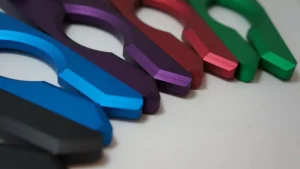
Pre-Processing
Pre-processing establishes a clean, uniform aluminum base, which is crucial for the adhesion and aesthetic consistency of the final oxide film.
- Degreasing: The surface is immersed or sprayed with a mild alkaline or neutral degreasing agent to remove oil, cutting fluid residues, and organic contaminants.
- Rinsing: Multi-stage counter-flow rinsing is performed, typically using Deionized Water (DI Water), to prevent cross-contamination.
- Chemical/Electrochemical Etching & Polishing: Etching removes the native oxide layer for a matte finish. Electrochemical Polishing (EP) is used to achieve a high-gloss, mirror finish.
Tank Processing
This is the core electrochemical conversion phase, determining the oxide film’s thickness, hardness, and porous structure.
- Electrochemical Oxidation (Anodizing): Aluminum is immersed in an electrolyte where temperature, acid concentration, and current density are controlled. Applying DC power creates a highly ordered, porous aluminum oxide structure.
Post-treatment
Post-treatment is the final stage, which imparts the required color and ultimate anti-corrosion properties to the oxide film.
- Dyeing or Colouring: (Optional Step) Achieved by immersion in organic dye solutions (chemical dyeing), or by applying AC current in a metal salt electrolyte (electrolytic colouring).
- Sealing: Micro-pores are sealed using hot water hydration sealing or chemical sealing. This converts the porous structure into non-porous hydrated aluminum oxide (Al2O3⋅H2O), maximizing isolation from the environment and providing final corrosion resistance.
Oxide Film Types
Anodic films are classified based on their process and performance, most commonly following the US Military Standard (MIL-A-8625). Understanding these types is crucial for selecting the right surface finish.
Chromic Acid Anodizing (Type I)
This is the thinnest film type, ranging from 0.5 to $\text{2.5 \mu m}$. It uses chromic acid as the primary electrolyte. The core advantage is its extremely thin profile and high fatigue strength, which does not significantly affect the dimensional tolerance of precision parts. It is primarily used in aerospace applications.
Sulfuric Acid Anodizing (Type II)
This is the most common and widely used type, with a moderate thickness of 5 to $\text{25 \mu m}$. It uses sulfuric acid and focuses on aesthetics and basic protection. The film’s transparency makes it highly dyeable, making it the first choice for consumer electronics casings, decorative parts, and general consumer goods.
Hard Anodizing (Type III)
Designed for maximum protection, this is the thickest type, reaching 25 to $\text{150 \mu m}$. It uses sulfuric or sulfonic acid at near-freezing temperatures to achieve extreme hardness (Vickers hardness typically 350 to 500), offering several times the wear resistance of Type II. Due to the film’s thickness, tolerance compensation must be designed into the part. It is mainly used for military, hydraulic, and high-friction components.
Key Technical Parameter Comparison
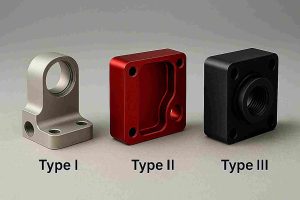
| Feature | Type I (Chromic Acid) | Type II (Sulfuric Acid) | Type III (Hard Coat) |
| Typical Thickness | 0.5 to $\text{2.5 \mu m}$ | 5 to $\text{25 \mu m}$ | 25 to $\text{150 \mu m}$ |
| Vickers Hardness (HV) | N/A | 150 to 250 | 350 to 500 |
| Primary Focus | Aerospace (Fatigue Strength) | Aesthetics, Consumer Goods | Military, High-Wear, Hydraulics |
| Dimensional Impact | Minimal (Negligible) | Minor (Easy to Control) | Significant (Requires Pre–compensation) |
| Corrosion Resistance | Good | Excellent | Best |
Phosphoric Acid Anodizing
This is a special thin-film oxidation, about 1 to $\text{2 \mu m}$ thick, primarily used as a pre-treatment primer before painting or bonding. Its unique property is that it provides extremely strong adhesion, making it ideal for aluminum surfaces that require subsequent bonding in aerospace assemblies.
Core Benefits
Anodizing is the most common aluminum finish in the B2B sector, offering functional advantages that go far beyond aesthetics.
Enhanced Corrosion Protection
The anodic film is chemically stable and inert, effectively resisting corrosion from humidity and industrial chemicals. This stability allows sealed anodized parts to easily pass the stringent ASTM B117 salt spray test and provides a superior long-term ROI in marine and industrial environments.
Significantly Improved Surface Hardness and Wear Resistance
Especially Hard Anodizing (Type III), which dramatically increases surface wear resistance and scratch resistance. The film typically achieves a Vickers hardness of 350 to 500 HV, making it the ideal choice for high-durability components like hydraulic valves, pistons, and high-friction parts.
Excellent Insulating and Thermal Emissivity Properties
The oxide film is an electrical insulator, a crucial benefit for separating conductive surfaces in electronics. Additionally, anodized aluminum (especially black film) possesses high thermal emissivity, making it perfect for heat sinks, LED housings, and systems requiring effective thermal management.
Improved Aesthetics and Color Versatility
Anodizing allows the aluminum to absorb various organic or inorganic dyes, achieving a wide range of colors and gloss levels, delivering a deep, lasting metallic finish superior to most traditional coatings.
Limitations and Risks
Anodizing, while highly effective, is subject to specific material and process limitations that industrial buyers must consider.
Chemical Restrictions and Maintenance Risks
The highly durable oxide layer can be easily damaged by strong alkaline chemicals. This means that cleaning agents containing caustic soda or even common alkalis like baking soda (sodium bicarbonate) should be strictly avoided for maintenance, as they will chemically strip the oxide layer.
Process Tolerance and Imperfection Magnification
Due to the conversion nature of the coating, anodizing will not mask underlying surface imperfections; in fact, extrusion lines, grinding marks, or material irregularities (such as hot/cold spots) are often magnified. This phenomenon emphasizes the rule: ‘garbage in, garbage out.’ Additionally, achieving a consistently high-quality anodic film is heavily dependent on precise process control. In Hard Anodizing (Type III), a commonly cited guideline for controlling film thickness is the ‘720 rule’, which roughly correlates 720 minutes of processing time to 1000 square inches (6450cm2) of surface area to achieve proper film thickness.
Material Compatibility: Suitable vs. Unsuitable Metals
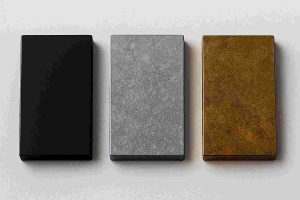
Anodizing is a process primarily applied to non-ferrous metals that naturally form an oxide layer. While the fundamental electrochemical principle can be applied to several metals, it is most effectively and commonly used for aluminum and its alloys, followed by titanium and magnesium. These metals are naturally suited for the oxidation process, yielding a durable, protective film. The highest quality results are typically achieved with the 6061 and 7075 series aluminum alloys, which are considered the ideal choices due to their consistent chemical composition.
However, the process is incompatible with most other common industrial metals. Metals such as iron, steel, copper, zinc, and tin cannot undergo the traditional sulfuric acid anodizing process, as they will aggressively degrade the electrolyte, leading to process failure. Furthermore, aluminum alloys high in silicon (like many castings) or copper are known to be difficult to anodize and often result in a poor, gray, or non-uniform finish.
Application Fields
The multifunctionality of anodizing makes it an indispensable surface treatment technology across several high-standard industries.
Consumer Electronics and Accessories
Widely used for smartphone casings, tablets, laptop bodies, camera components, and high-quality electronic accessories.
Aerospace and Automotive Industries
In aerospace, Chromic Acid Anodizing (Type I) protects structural components against fatigue cracking. In the automotive sector, it is applied to critical engine components like hydraulic valve bodies and pistons.
Architectural and Consumer Goods
Used for building facades, window frames, and interior decorative elements. Also used for high-quality cookware and sports equipment.
Performance Metrics Comparison
Anodizing vs. Common Coatings Comparison
While the initial cost of anodizing may be slightly higher than standard powder coating, its long-term value and technical performance make it a more cost-effective choice. The anodic film is converted from the substrate itself, meaning it is not susceptible to peeling, blistering, or cracking common with surface coatings. Especially in terms of UV resistance, anodizing exhibits superior stability and will not fade from long-term sun exposure. For B2B applications demanding precise dimensions, higher hardness (e.g., Type III), and molecular adhesion, anodizing offers durability and long-term ROI that powder coating cannot match.
Corrosion Resistance and Rust Prevention
The anodic film effectively prevents rust. As a passive conversion layer grown from the substrate, it provides superior, integral protection against salt spray and humidity.
Durability and Service Life
Its durability is extremely strong, lasting decades under ideal conditions, though it is not absolutely permanent. The film’s hardness, especially Type III, ensures long service life even in demanding applications.
Anodizing vs. Other Materials: Key Materials Comparison
| Feature | Anodized Aluminum | Stainless Steel (304/316) | Galvanized Steel |
| Material | Aluminum Oxide Conversion | Steel Alloy | Zinc External Coating |
| Weight | Extremely Lightweight | Heavy | Heavy |
| Thermal Conductivity | Excellent (High) | Fair | Good |
| Ultimate Scratch Resistance | Good (Type III is high) | Superior (Best) | Low |
| Corrosion Mechanism | Passive Conversion Layer | Internal Alloying | Sacrificial Coating |
Frequently Asked Questions (FAQ)
Which aluminum alloys are best suited for anodizing?
6061 and 7075 series alloys are ideal choices. Alloys high in silicon (like castings) or copper are often difficult to anodize.
Does anodizing change the part dimensions?
Yes, dimensions will increase slightly. The thickness of the part increases by approximately half the film thickness.
Can anodizing be removed?
Yes, it can be removed. The anodic layer can be dissolved using alkaline chemicals such as caustic soda.
Is the anodic film conductive?
The anodic film itself is an electrical insulator. If conductivity is required, other surface treatments like chemical conversion coatings must be used.
Is anodizing more expensive than powder coating?
The initial cost of anodizing may be slightly higher than standard powder coating, but its extreme wear resistance and UV resistance often result in lower long-term costs.
Conclusion
Anodizing is the critical finishing process for enhancing the value and performance of aluminum. It provides lasting protection and superior functionality, whether you choose standard or hard anodizing. Always consider the alloy type, film thickness, and application environment for the best results.
Get Your Custom Anodizing Solution
If you have any questions regarding the application, cost, or specialized alloy processing for Hard Anodizing or Standard Anodizing, please contact our engineering team immediately. Click here to get a custom anodizing solution and quote, ensuring your product stands out from the competition.
